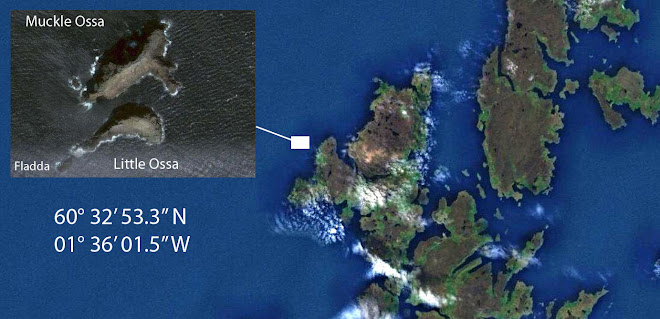Shetlanders are being asked to bring scientists their dead mice so they can work out if the island was invaded by ‘Viking’ rodents.
Both species of mice on Shetland (the house mouse and the wood or long-tailed field mouse) are thought to have arrived on the island as stowaway passengers in the longboats of Norse settlers or traders.
An artists impression of what a Viking Mouse may look like
As part of the study researchers are asking Shetland residents to hand in any dead mice they find to the Scottish Natural Heritage office in Lerwick.
Researchers have already identified the genetic code of house mice in Shetland as an important clue to the evolution of mammal species across Europe.
Researchers have already identified the genetic code of house mice in Shetland as an important clue to the evolution of mammal species across Europe.
Dr Frank Chan of the Max Planck Institute for Evolutionary Biology in Germany is leading the Viking mouse study.
Muckle O and Fladda (Peerie O is off-line at the mo), sought a quote from the "Shetland Mice and Rodents Territorial Inhabitants Entertaining Society" - 'Smarties', but none were available for comment as hundreds of Shetlander's were busily trying to kill them and they had all dissappeared down the nearest available hole, including oil-boil-holes.
However, these rufty-tufty marauding Viking mice did not just confine their invading and pilaging to the northern isles......
"A rodent hunter with a head for heights is being sought for a project on the remote island of St Kilda.
Edinburgh University is seeking a volunteer to trap and study a unique species of mouse thought to have arrived on the archipelago with the Vikings over 1,000 years ago.
The successful applicant will have to spend five weeks scrambling over high cliff tops searching for mice in gales and rain.
Whoever is appointed to the post will accompany a research team and stay in one of the restored cottages in the original village.
The mouse is heavier and has a different hair colouration on its belly to mainland field mice.
However little else is known about its behaviour or how large is its population scattered around the remote location around 100 miles off the Scottish mainland.
Tom Black, the University of Edinburgh PhD student undertaking the research, described the post as “hard work in (probably) horrible weather, but also good fun”.




2.JPG)







.jpg)







Dammit, so that's where my pet mouse got to. And he pinched my spare helmet when he left.
ReplyDeleteI don't want him back so just shoot him on sight and post him to the scientists.
However, I'd like the horny helmet back.... LOL